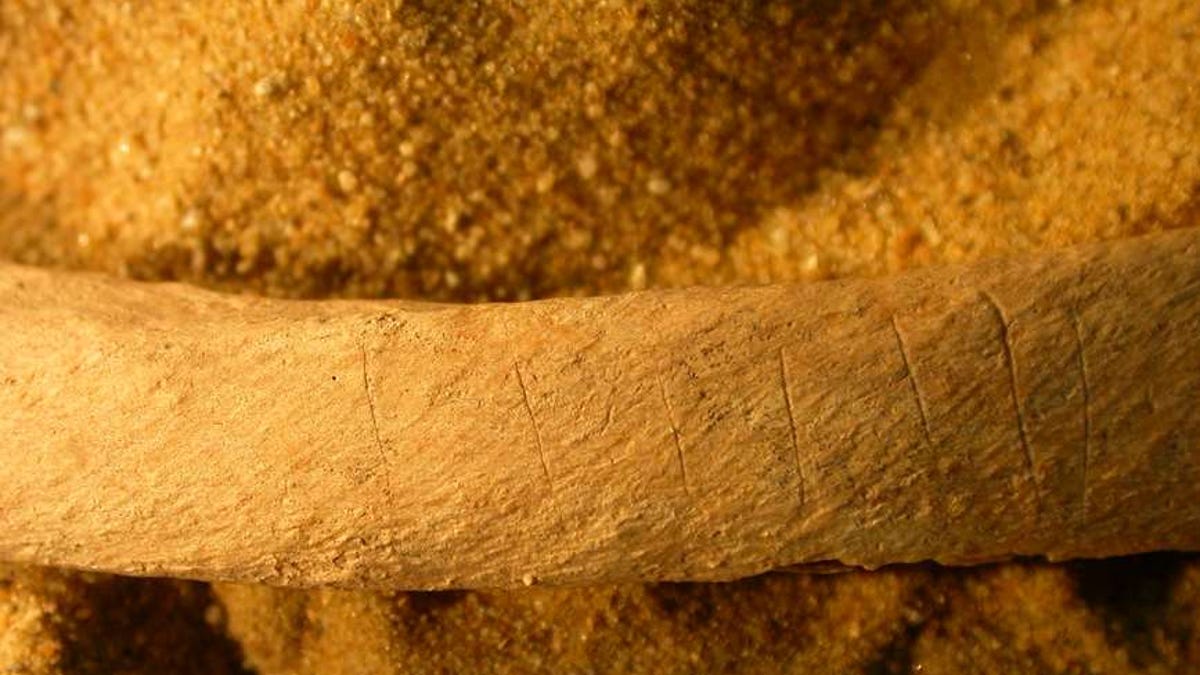Medieval villagers dismembered skeletons to keep undead away
Likely out of fear of zombies and vampires, a new study suggests, people decapitated, dismembered and burned corpses to stay safe.

Knife marks on this rib bone indicates dismemberment but not cannibalism.
While zombies and vampires are popular in mainstream entertainment today, people living in Medieval England very much feared the undead, a new study suggests.
Researchers examined a collection of human remains from a pit at the site of Wharram Percy, a deserted medieval village in North Yorkshire, England, and discovered evidence the bones had been deliberately defaced.
Six bones showed perimortem (post-death) breakage, and 17 were burned. Seventeen bones showed a total of 76 sharp-force marks (mainly from knives) mostly on the upper body parts.
"The idea that the Wharram Percy bones are the remains of corpses burnt and dismembered to stop them walking from their graves seems to fit the evidence best," says the study, which was published Sunday in the Journal of Archaeological Science.
"If we are right, then this is the first good archaeological evidence we have for this practice," the study adds. "It shows us a dark side of medieval beliefs and provides a graphic reminder of how different the Medieval view of the world was from our own."
A diagram showing distribution of cut marks in the remains.
The team, which included scientists from the University of Southampton and Historic England, a public organization that protects historic sites, studied 137 bones "representing the substantially incomplete remains of a minimum of 10 individuals."
The remains included bones from both male and female skeletons, ranging in ages from 2 years to 50 years at death. The bones' radiocarbon dates back to 11th-13th century.
It wasn't uncommon in medieval times for villagers to believe in folk legends about bodies rising from the dead and exacting their revenge on the living. Decapitating and burning the corpses were often considered the best ways to prevent revenants from leaving their graves.
This study, however, discounts the possibility of cannibalism, thanks to the location of the knife marks on bone.
Cannibalistic evidence shows that cut marks cluster around major muscle attachments or large joints, but these bones from Wharram Percy show knife marks were mainly in the head and neck area.
The study is called "A multidisciplinary study of a burnt and mutilated assemblage of human remains from a deserted Medieval village in England," but if the scientists want their work made into TV show, they probably would have been better off going with "iZombie Medieval Times."
Batteries Not Included: The CNET team shares experiences that remind us why tech stuff is
Solving for XX: The industry seeks to overcome outdated ideas about "women in tech."

